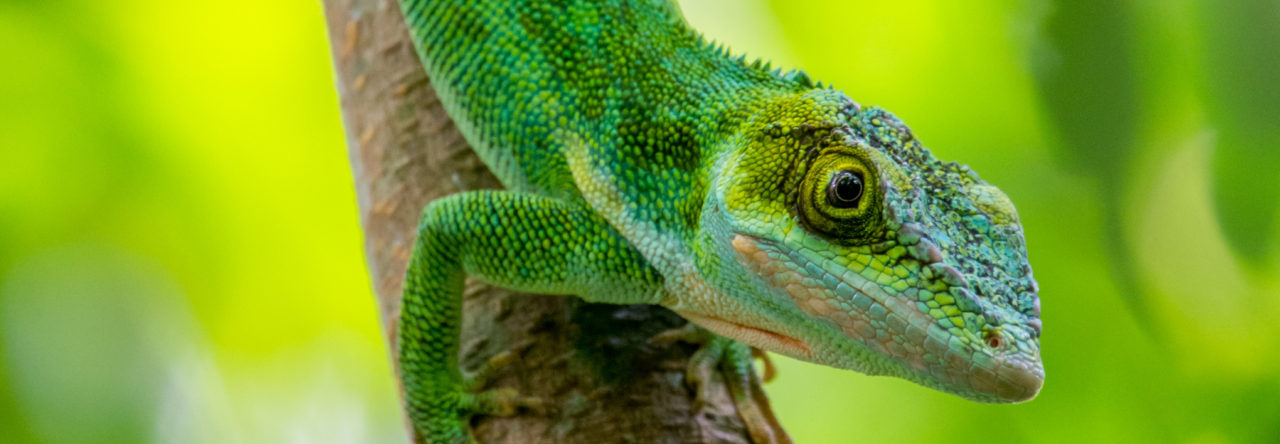Who knew that false chameleons, as they are called (technically, anoles in the clade—formerly genus—Chamaeleolis), are so common in the reptile captive husbandry world? In Cuba, these animals are a rare treat, one of the hardest anoles to find. Many talented anole biologists have returned from Cuba empty-handed, with nary a Chamaeleolis spotting to report. One might think that a big, white lizard like this would be easy to spot, but they are very slow and shy, blending right into their environment.
Cuba strongly protects its native wildlife, but apparently some got out, reputedly to Europe. Turns out that they are easy to breed, and so now they are readily available. Not cheap, though—a quick google found false chameleons of several species for sale, but the standard price was in the $500 range.
In any case, should you have a hankering to go Chamaeleolis, there’s now a good resource for captive husbandry and care. Kelly Bradley of the Forth Worth Zoo has raised many a false chameleon in her day, and she’s now detailed how to do it in her recent tell all exposé in Reptiles magazine














